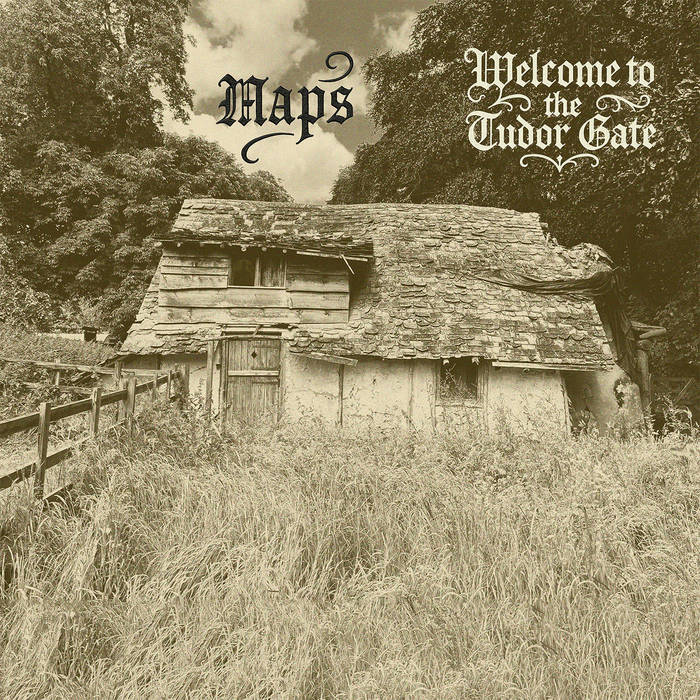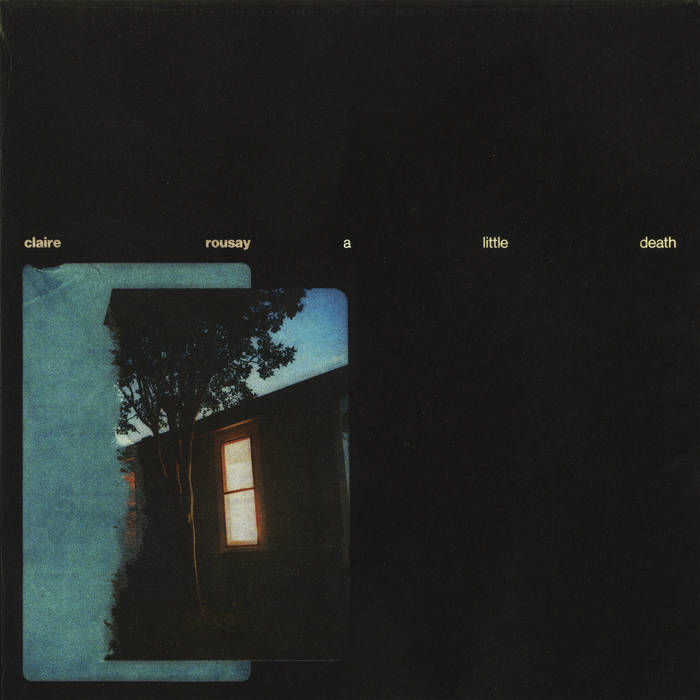
Maps "Welcome to the Tudor Gate"
A foreboding land of immense forests and mysterious beings – where magic is real, and witchcraft is feared.
A long-lost soundtrack to a half-remembered film, has now been unearthed, and invites you in.

Dom Mariani "Apple of Life"
Dom Mariani—a devoted fan of underground ’60s garage rock, classic pop, power pop, soul, and R&B—has long been hailed as one of Australia’s finest guitar pop and garage rock artists. He returns with his eagerly awaited second solo album, “Apple of Life.”
Recorded in Fremantle, Western Australia, the album highlights Mariani’s unmistakable knack for melody and the infectious power-pop sound that defined his work with The Stems, DM3, and The Someloves.

Holy Sons "Puritan Themes"
Holy Sons is the solo project of Emil Amos (Grails, Om, Lilacs & Champagne). Puritan Themes is his 17th album, his 4th for Thrill Jockey Records and a tentpole album in his wide-ranging output. Puritan Themes’ relaxed aura is focused through a laid-back west coast 70’s lens, injecting Amos’ wry wit and tinges of darkness into lush songs that drift like dreamy, featherlight clouds.
Puritan Themes is a record that knowingly, barely fits into the modern world. When mixing the record in Chicago throughout summer of 2025, every day Amos would skate through Douglass Park listening to 70’s AM radio and doze off at night to early Bee Gees interviews. The earliest concept of the record was based around the track “Chain Gang”. Amos explains: “It’s an imaginary take on if Cat Stevens had smoked a ton of salvia and taken a much darker route within the world of dense, story-telling songwriting.” An existential fairy tale built off of American legends like Cool Hand Luke and John Henry, ‘Chain Gang’ is the heart of the political stance of Puritan Themes, recalling Guy Debord’s Society of the Spectacle with its final lines ‘A thousand idiot’s eyes are focused on the one diseased prize’. The track “Raw & Disfigured” borrows its name from the last Thrill Jockey Holy Sons record, in a referential move that’s stolen from how Led Zeppelin separated the track “Houses of the Holy” from the record of the same name (again harkening back to 70’s lore).
Everything is recorded, performed and mixed by Amos. Amos has been a beacon in the world of home-production for decades now, a progenitor and godfather of modern bedroom-pop and one-man-orchestras, making dense, organic sounding arrangements primarily on his own. His free-wheeling, adventurous spirit as a producer mirrors his cerebral and sprawling landmark podcast “Drifter’s Sympathy,” which feels inexorably tied to his practice of home recording. The album features Kelly Pratt (David Byrne, M Ward) playing and arranging the horns on “Chain Gang”. In addition to playing guitar and drums which Amos is most known for playing live, Puritan Themes features all the staple instruments of Holy Sons: mellotron, lap steel, various drum machines and the Akai MPC sampler. Notable is Amos’ obsessive and unusual approach to mixing, repeatedly bouncing down instruments and applying pitch-bending or re-rooming plug-ins that obscure the original sound sources.
Puritan Themes steps out of time and reaches back to 70’s sounds in order to escape the machinations of the current world. The compositions return to a more innocent ground floor when listeners had the time to sit with an entire album and let the lyrics sink in. Tune in and Tune out.

Claire Rousay "A Little Death"
claire rousay’s music cascades from a well of documented experience, reflections of the past that compose the present. A prolific multi- instrumentalist, producer, and composer, rousay gracefully crafts boundaryless music. From her frequent and acclaimed collaborations to her film scoring, from her own compositions to her solo pop work, rousay’s music is delicate yet powerful, carefully constructed with a casual intimacy. rousay collages a wealth of found sounds and field recordings with earthy strings, stately piano, and processed instrumentation, all of which trace the outlines of memories and distinct impressions and create a complex constellation of feeling. a little death illustrates rousay’s ability to sculpt sonic microcosms from disparate raw materials, worlds where sound and feeling are one in the same. Shaped around field recordings she captured at dusk, the album is an homage to the gentle drifts and lurking disquiet of twilight.
The process of composing a little death felt like a homecoming for rousay after the more pop-oriented song forms of 2024’s sentiment. “sentiment was a different way of working that helped refresh my music making habits and usual flow,” rousay notes. “This record is a return to what I see as my core solo practice, a re-dedication to those methods of working which I’ve found most align with what I envision my music or sound to be.” Intended as a part of a trilogy along with a heavenly touch and a softer focus, the pieces on a little death sprout from a wellspring of tactile samples and granularly processed sounds. The use of sounds recorded from her life outside of the studio remains a throughline in her work. While the previous two albums used field recordings as the primary sound source or central figure in the compositions, here they act more as springboards, timbrally intertwining with live instruments like additional voices in a chamber ensemble. Captured as daylight fades into memory, the sounds give a subtler diaristic impression, the recordings occupying a more elemental space which give moments of absolute clarity a shine in the dim gloaming.
rousay’s practice on a little death highlights her sensitivity to nuance, as moments of chance are deftly interwoven into compositions with intent. The album playfully combines elements with varied recording fidelities, rousay adding new layers of textural complexity with the juxtaposition of found sounds, melody and harmony. “Blending fidelities comes from how I started making music on my own,” says rousay. “I started recording myself as a teenager, and I needed two microphones and I had one real one and then my laptop. I’d use them both and find a way to make them work together. These pieces share a lineage with that, using what’s available.” Bristling electronics and violin harmonics are dotted by fidgety rustlings on “conditional love”. The metallic grinding and percussive clangs of “just”, featuring M. Sage, breathe sparks into droning clarinets and chordal piano figures. Recent and frequent collaborators like more eaze, Gretchen Korsmo, Andrew Weathers, and Alex Cunningham act as a make-shift sample library across the record, rousay manipulating performances old and new into elements that fit into her orchestrations. The lonesome acoustic guitars rousay employs on “night one” and “somewhat burdensome” recall the pop forms of sentiment but live deeper in the fabric of her compositions, woven by her dynamic arrangements.
rousay’s music has evolved from confessional to conversational and
excavates the rich emotional essence of each passage. Her work as both archivist and adept arranger and orchestrator merge sublimely into deeply honest and engrossing music. The pieces of a little death are charged with rousay’s voice while giving space for new interpretations and contexts. The shifting atmospheres act as fragments of perspective, each ecstatic instance opening itself to new perceptions. On a little death, rousay’s blend of pop sensibility and compositional acumen turn abstracted sounds into tangible feelings, its warm, glimmering glow coalescing sensually with the darkness.